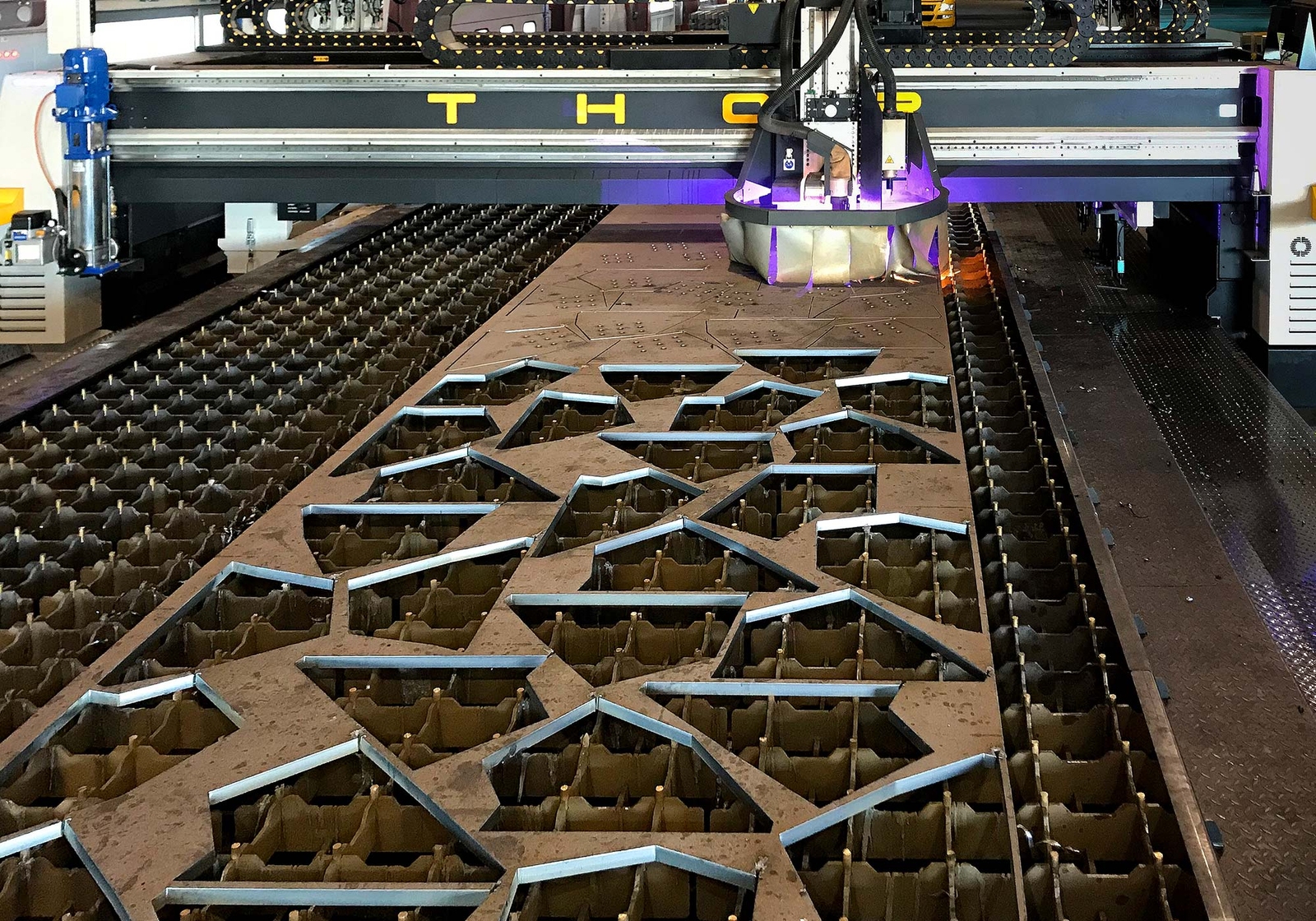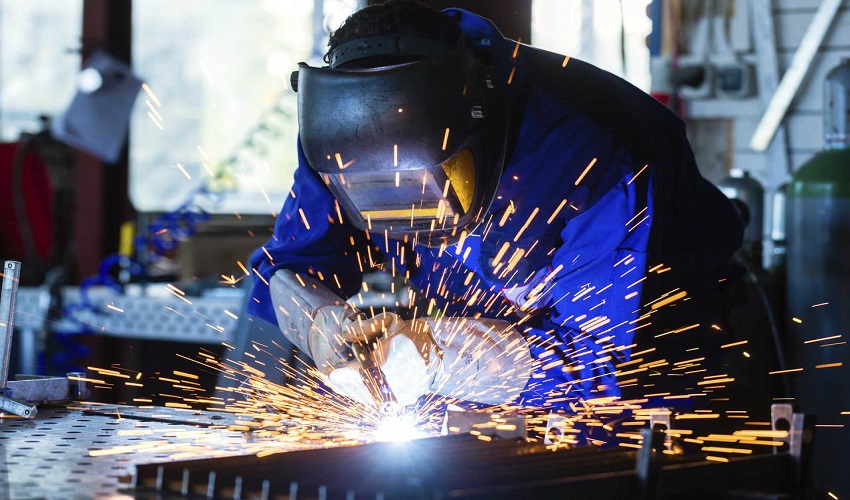Metal Fabrication Melbourne: Precision Engineering for All Demands
Metal Fabrication Melbourne: Precision Engineering for All Demands
Blog Article
Innovative Patterns in Steel Fabrication: Enhancing Resilience and Accuracy
In the world of steel construction, the search of sturdiness and accuracy has actually resulted in a wave of cutting-edge patterns that are improving the industry. From innovations in welding modern technologies to the combination of robotic automation in manufacture procedures, the landscape of steel production is developing rapidly. High-strength alloy development, coupled with the usage of 3D modeling and simulation software, is pressing the borders of what is attainable in regards to architectural stability and accuracy. Furthermore, the expanding emphasis on sustainable techniques in steel manufacturing is not just driving effectiveness but additionally fostering a more ecologically conscious method to construction. These trends are not simply forming the present however also laying the groundwork for the future of steel construction, promising additional enhancements in toughness and accuracy.
Advanced Welding Technologies
In the world of steel manufacture, the fostering of cutting-edge welding innovations has dramatically changed the sector's method to achieving premium high quality and precision in structural welds. Advanced welding innovations, such as laser beam of light welding and friction stir welding, have actually emerged as game-changers in the area. Laser beam of light welding employs a focused laser light beam to sign up with metal parts with remarkable precision and rate, making it suitable for detailed styles and thin products. On the various other hand, rubbing stir welding produces exceptionally strong bonds by mechanically intermixing the particles of the materials at the joint, eliminating the demand for melting the steel. These technologies use various benefits, consisting of minimized heat-affected zones, minimal distortion, and boosted mechanical buildings in the welded joints. By leveraging these advanced welding techniques, steel makers can elevate the sturdiness, stamina, and accuracy of their structural welds, meeting the significantly requiring requirements of contemporary construction jobs.
Robot Automation in Fabrication
Embracing robot automation has come to be a keystone of contemporary steel fabrication practices, enhancing and enhancing procedures efficiency across the industry. Robotics are transforming the method steel parts are manufactured, using unrivaled precision and speed while minimizing human error. These automated systems can deal with repetitive jobs with regular accuracy, resulting in higher high quality output.
One trick advantage of robot automation in steel construction is the capacity to work all the time without fatigue, dramatically raising manufacturing result. This continual procedure reduces downtime and increases project timelines, ultimately saving costs for manufacturers. Furthermore, robotics can be set to carry out detailed jobs that may be challenging or harmful for human employees, improving safety and security in the workplace.
Additionally, robotic automation allows smooth combination with other electronic modern technologies, such as computer-aided style (CAD) software and Web of Points (IoT) systems (steel fabrication melbourne). This interconnected method boosts communication between different stages of construction, maximizing process and making sure real-time monitoring and control. As the steel manufacture industry continues to progress, robotic automation stands out as a transformative pressure driving effectiveness and precision in making processes

High-Strength Alloy Growth
The improvement of high-strength alloy advancement in steel manufacture is improving the industry's method to enhancing material sturdiness and efficiency. High-strength alloys are crafted to show superior mechanical buildings, such as enhanced tensile stamina, durability, and corrosion resistance contrasted to standard steel grades. By incorporating these sophisticated alloys into fabrication procedures, suppliers can create elements that withstand greater anxiety degrees and rough environments, resulting in even more reliable and resilient final product.
One key benefit of high-strength alloy development is the capability to minimize material thickness without endangering architectural honesty. This not only results in lighter-weight elements however additionally adds to cost savings and boosted effectiveness in construction and assembly procedures. In addition, the improved strength-to-weight proportion of these alloys permits the design visit their website and building of frameworks with greater load-bearing capacities while reducing total weight.
3D Modeling and Simulation Software
Innovations in steel construction processes have actually been significantly driven by the integration of cutting-edge 3D modeling and simulation software program devices. These tools permit makers to develop detailed online versions of their jobs, enabling them to picture the final item with accuracy prior to any physical job starts.

Sustainable Practices in Steel Manufacturing
Incorporating lasting methods right into steel production procedures is important for reducing environmental influence and guaranteeing long-lasting resource accessibility. One vital sustainable practice is the adoption of energy-efficient technologies to minimize greenhouse gas exhausts throughout the steel production process. This includes using renewable resource sources, such as solar or wind power, to power steel plants and carrying out energy-efficient equipment to optimize power usage.
Another crucial element of sustainable steel manufacturing is the accountable sourcing of resources. This involves guaranteeing that the iron ore and other resources made use of in steelmaking are gotten from ecologically friendly and moral sources. By advertising openness in the supply chain and adhering to stringent environmental standards, steel producers can minimize the unfavorable effects of resource extraction on regional ecological communities and communities.

Final Thought
To conclude, the ingenious patterns in steel construction such as sophisticated welding technologies, robotic automation, high-strength alloy advancement, 3D modeling and simulation software, and lasting practices are boosting the durability and precision of steel items. These developments are transforming the steel construction market by enhancing sustainability, high quality, and efficiency. It is clear that the future of steel manufacture hinges on welcoming these innovative technologies to meet the needs of modern-day construction and production sectors.
In the realm of steel manufacture, the quest of resilience and accuracy has led to a wave of cutting-edge trends that are improving the industry.In the realm of steel construction, the adoption of advanced welding innovations has actually dramatically revolutionized the industry's technique to attaining superior top quality and precision in architectural welds. As the steel manufacture industry proceeds to progress, robotic automation stands out as a transformative force driving efficiency and precision in producing procedures.
Furthermore, recycling and reusing steel scrap and waste materials play a considerable duty in boosting the sustainability of steel production. steel fixing.In final thought, the ingenious fads in steel construction such as innovative welding innovations, robotic automation, high-strength alloy advancement, 3D modeling and simulation software, and sustainable techniques are enhancing the toughness and precision of steel products
Report this page